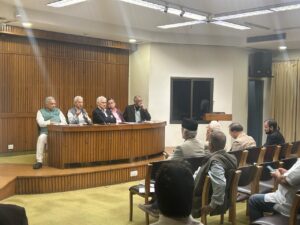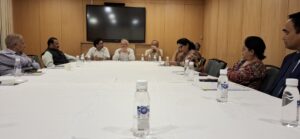
Persian or Farsi, which once ruled the Indian heartland, is in danger of becoming an extinct language. Lack of quality teachers and job opportunities have forced many schools to wrap up the Farsi classes and opt for the alternatives. Still, there are many who are trying to keep the cultural connection with the Persian alive.
Uttar Pradesh, is the biggest Indian state in terms of population. According to the census held in 2011, the state has a population of around 166 million. It is approximately more than double the total population of Iran. The province houses around 39 million Muslims and has more than 11 thousand registered Madrassas. Also, many secondary schools affiliated to the state education board teach Farsi as a subject. In Central institutions like Benaras Hindu University, the Aligarh Muslim University, Allahabad University and the provincial state government run Lucknow University have the dedicated department Persian, which offer teaching and research.

Despite all the good infrastructure, the number of students opting for Persian are sharply declining. Many secondary and senior secondary schools have stopped teaching Farsi as there are no takers for the course. “We are trying our best to run the course till senior secondary level, but there are very few takers”, says Syed Bilal Zaidi, principal of the HM Inter College, Nahtaur, situated in the Bijnor district. “It may be because there are few job opportunities and more students want to opt for English now”, adds Bilal.
Though India and Iran shared the historical relationship since ages, it is believed that the Farsi came to India with the Muslim rulers during the 11th century. After the Ghaznavid conquests paved the way for Persian or the Farsi in India, the language saw splendid times. Thereupon every ruler, be a Turkik, Persian or an Afghan patronized Farsi. Soldiers, traders and scholars from the Persianised regions started visiting India as the Muslim rule consolidated in Northern India and expanded towards the South, East and West.
The language, known for its poetic essence reached its zenith in the Indian subcontinent during the Moghuls. As Farsi became the official language of the courts, more and more people started learning it. The Brahmins and the Kayasthas mastered themselves in the language of the rulers and so did the Muslim elite. India witnessed the creation of some of the best literature of the language in its courtyard. Schools and the local Madrassas taught the students in Persian. There came a time when Persian was the language spoken or used by the largest number of people in the world.
And then came the decline. Hindustani (the Hindi and Urdu) started replacing Farsi. The rise of British colonialism in the Indian subcontinent saw the emergence of a new language, English, replacing both Farsi and Urdu. Though the downfall started during the last days of the emperor Aurangzeb, the Persian still managed to survive in poetry, religious texts and the syllabus of the seminaries (Madrassas). After the Independence in 1947, Persian sustained in the pockets.
Despite the partition of India on religious grounds and Urdu becoming the official language of the newly formed Pakistan, Persian continued to be taught in madrasas and the schools affiliated to Persian, Urdu Boards.
There are the Board of Persian and Urdu Education in states like UP and Bihar. Aligarh Muslim University, Maulana Azad University Hyderabad, University of Madras, Delhi University, Benaras Hindu University, Mazharul Haque Urdu Persian University Patna, and Guru Nanak Dev University Punjab continue to attract large number of students at graduate, post graduate level and also the researchers. Also there are many institutions running diploma and certificate programs in Persian.
Although, picture is gloomy for Persian in the Indian subcontinent, still there are some rays of hope. Data suggests the rise of students studying Persian in the southern state of Telangana. Also, there are some language enthusiasts joining the Persian classes in some other states. Though, the chances of revival or returning to the golden old days are bleak, being read as the status symbol may prove to be a lifeline for Persian in India.
ViewsWall- Your Views


